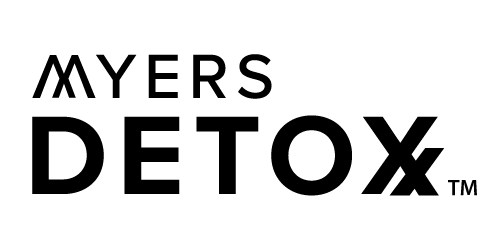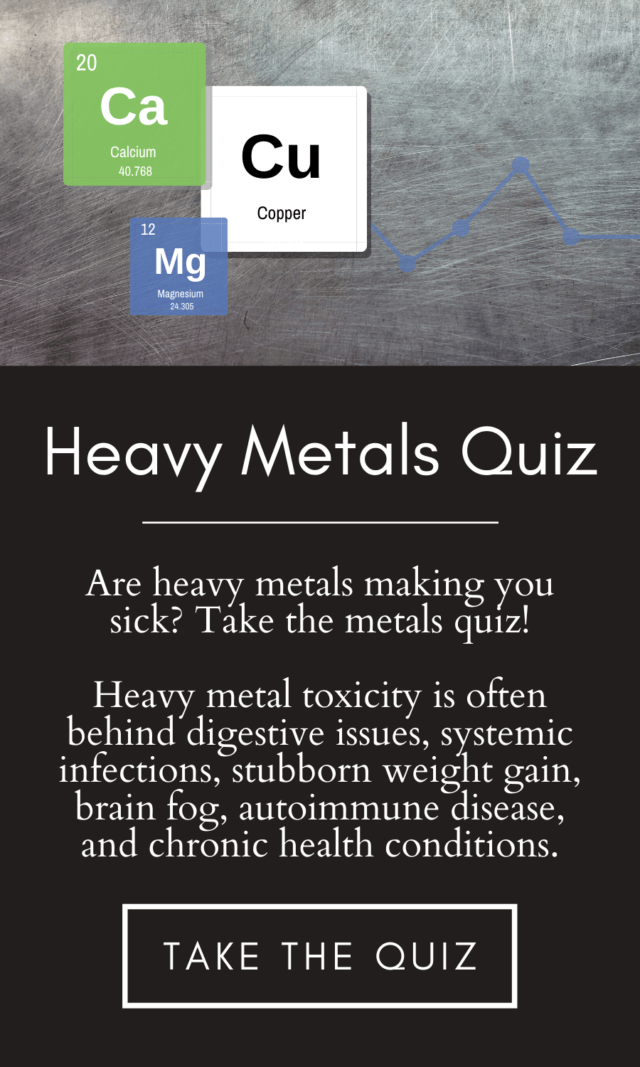Transcript #382 How to Eliminate Back Pain with The Neck Shaper with Eileen Durfee

Listen
Listen to this podcast or watch the video. CLICK HERE
Transcript
Download PDF
Click to jump to a section!
- Find out what’s in store for this Myers Detox Podcast with Eileen Durfee, who joins the show to talk about the real cause of back pain, and how to eliminate it. She also discusses why Americans spend 50 Billion a year on lower back pain relief, the dos and don’ts of posture and exercise, and her incredible new Neck Shaper back relief device.
- Back and neck pain is caused by the tremendous effort your body undergoes to hold you up in gravity. Learn more.
- Muscles tighten in your body when you stray away for your ideal posture. Find out why.
- Two forgotten muscles, the interspinalis and the multifidus, are key for keeping our vertebrae in alignment. Learn more about the exercises and techniques you can do in order to retrain the spine and restructure your posture.
- Find out about the two common exercises you should never do, as well as some alternatives.
- Learn about Eileen’s amazing Neck Shaper device, how it works, how to use it, and its accompanying products designed to help stop back and neck pain.
- If your posture is four inches forward, instead of having the right shape over your pelvis, you’re going to have 893 pounds of exertion on your hips. Find out more about some of the concerning facts of poor posture, and how the Neck Shaper can help!
- You can learn more about Eileen and her products at www.creatrixaffiliates.com
- To learn more about her incredible Neck Shaper device and purchase one, click here!
Wendy Myers: Hello everyone. I’m Wendy Myers of myersdetox.com. Welcome to The Myers Detox Podcast. Today we have my good friend, Eileen Durfee, on the show. I love having her on. She’s a nuclear engineer and uses her thinking cap to reinvent detoxification. Now she’s gotten into the back of the back industry, so to speak. She has helped develop a device that can completely transform your back health, how you perform and your energy levels. It’s really compelling, the evidence Eileen lays out in today’s show. We’re going to be talking about how to eliminate back pain with her neck shaper device. She’s got lots of really interesting takeaways to share on today’s show. We’ll talk about what the real cause of back pain and neck pain is and the two exercises you should never do. This really surprised me. I promise I have no problem eliminating these exercises from my exercise routine.
Wendy Myers: We talk about why Americans spend $50 million a year on lower back pain alone, it actually might be billion, that’s more accurate. We’ll talk about how a head with good posture weighs 32 pounds. A head with forward posture, where you’re kind of leaned over, like when you’re looking at your phone all day long, that posture creates 117 pounds of pressure. As you can imagine, that’s going to just cause even more problems and exacerbate the posture issue. We talk about how with good posture, your muscles are kind of relaxed and supple, but when people have tight muscles, it’s your body trying to get that spine back into alignment. If you have really tight muscles, it’s a sign that your spine is out of alignment. We’ll also talk about the two most important muscles of the spine to strengthen. Eileen will explain in detail how to use her neck shaper device, currently used by NFL and baseball players.
Wendy Myers: I know you guys listening to the show are concerned about detox. You’re concerned about the level of heavy metals, chemicals or glyphosate that you have in your body. I created a quiz, it’s called heavymetalsquiz.com. I created this as a way to assess your relative body burden of toxins. Just go there and take the quiz. It takes just a couple of minutes. You’ll get a free video series afterwards that will explain where to begin detoxing. Where do you start? How long does it take? I created this video series to answer all of the most common questions that people have about detox. It’ll be a great education for beginners and advanced detoxers alike. Go take the quiz at heavymetalsquiz.com.
Wendy Myers: Our guest today, Eileen Durfee, is a former nuclear power engineer, auditor and inspector. She became toxic and suffered from allergies, chemical sensitivities and thyroid disease. During her journey to heal, detoxify and achieve natural health, she invented a lot of very helpful solutions. Eileen is passionate about taking good ideas and creating better health products to support detoxification, energy production, mineralization and overall natural health. She was granted one utility patent, has seven patents pending and is writing a self help book to fix that 100 billion a year, low back pain problem. You can learn more about Eileen Durfee and her amazing line of products for lower back pain and detoxification at creatrixsolutions.com. Eileen, thanks so much for coming on the show.
Eileen Durfee: Thank you for having me, again.
Wendy Myers: Yes. I love having you on the show. You’re such a wealth of information. Today we’re going to take a detour from detox, which is what we normally talk about, and talk about back pain. Millions of people, tens of millions of people in the United States alone deal with back pain, chronically or on occasion. What is the real cause of back and neck pain?
Eileen Durfee: It’s the shape of the spine and gravity. People don’t realize that your muscles exert a tremendous amount of effort to hold you up in gravity, which expends energy and makes us fatigued and everything else. Think of a baby when they’re born, they’re a C shape. They can’t crawl. They can’t sit up. As they begin to develop, because of gravity, they are no longer suspended in water in the mother’s womb. The effect of gravity begins shaping their spine. They get a curvature in their neck and a curvature in their low back and then they can actually stand up and walk. It actually takes 18 years to fully develop a functional spine. It’s like a crankshaft in a motor. If there’s a bent crankshaft, you’re going to overheat. You’re going to wear down edges and you’re going to seize up the motor. What we’ve neglected is to implement training to fully develop those curves. Right now, it’s almost by accident that you would get the right shape to where you can spend less energy and move more efficiently in gravity.
Wendy Myers: What do tight muscles mean in relationship to your posture? A lot of people have tight muscles today. They’re stressed. How’s that affecting their posture?
Eileen Durfee: It’s the body’s mechanism of protecting you. The muscles are tightening up saying, “Wait, you’re drifting too far from the ideal shape so we’re going to tighten those muscles so it doesn’t get worse.” The correct posture is an “S” shape curve where the head is in line over the hips, instead of a forward head posture from all the computer time, texting and sitting at your desk and the low back curvature so that you can stand erect. All the listeners could stand up right now and try to stand up straight, then have someone reach down and feel your hamstrings. If your hamstrings aren’t completely loose, you’ve got problems with your posture and your body’s spending more energy to hold you erect in gravity.
Wendy Myers: Why does using a posture reminder, a back brace or trying to stand up straight not work? I know we’ve all done that, where we’re worried about our posture and we’ll start standing up straight and putting our shoulders back. Why isn’t that the answer?
Eileen Durfee: Most people don’t have good curvature. To induce curvature, it’s been scientifically proven by Dr. John S. Scherger, that you need a shape underneath your body kind of like a train has a track to tell it where to go. You need a cushion that has a particular shape so that the back of your spine, the spinous process, the little pokey bone in the back can float free. Then the edges, they’re called transverse processes, can be caught. It’s like arching over that and then putting weight on top of the body, you have to have something underneath your body and something on top of your body, then you do specific muscular co-contractions. That actually induces curvature in the spine. When you do these specific exercises, it will actually adjust your own spine. It will bring it more into alignment and it exercises two forgotten muscles.
Eileen Durfee: Right now, all the exercises are about body muscle overload. Let’s get some biceps, let’s do some leg curls and some leg extensions. Let’s do all these things to make strong muscles, but they don’t look at how those lever arms work in relation to the spine when it doesn’t have curvature or when it does have curvature. The two forgotten muscles are the interspinalis and the multifidus muscles. The thing that people don’t realize is that if you have proper curvature in your spine, at the back of your vertebrae there are these bones that interlock, they’re facets, one on top of the other. If you’re moving in gravity and you have bone on bone contact that’s supposed to be bone on bone, it’s strong. If you lose this shape, then the force of gravity reverses and those bones don’t catch anymore. The only thing keeping your vertebrae from going out of alignment or discs from bulging is that multifidus and the interspinalis muscle.
Eileen Durfee: It’s absolutely critical that we begin reshaping the spine so that when we stand straight up, our hamstrings are completely loose. Dr. Scherger worked with the US Olympic team, with NFL teams and with Cornell University. They mathematically calculated every vertebrae in our spine, is it two inches forward or is it four inches forward, off of the center? If you look at most people walking around, they are two to four inches off the center of gravity and so gravity is pushing down on the head and on all these muscles. There’s huge forces and people don’t realize this.
Eileen Durfee: It was actually first calculated in like 1680 by Borelli. He’s known as the father of spinal biomechanics. They basically took a person and put 120 pounds on their shoulder. Then they calculated the exertion on the muscles and the spine. If they put 120 pounds on the shoulder and walked, it equalled 25,585 pounds on the fifth lumbar. A lot of low back injuries are the fifth and six lumbar, it was 413 pounds. Many people are having worn down discs and discs that are bulging. It was 1,239 pounds. People have no idea. They have pain, they have tight muscles, they go and they get massages or they have a reminder to straighten up. Just using other musculature to straighten yourself up, doesn’t strengthen the multifidus or the inner spinalis muscles responsible for inducing proper curvature that then would release the protective mechanism of the body, so all those other muscles will go loose.
Eileen Durfee: Now we have three exercises that we teach. The first exercise is a neck flexion and we have a force applicator, as we call it. It’s a neck shaper where we can put force and resistance to strengthen those two muscles. There’s also a proper sit up. It’s almost like if you took a sleeping bag and rolled it up. An exercise ball has the wrong shape. It needs to be more like a sleeping bag. We have a power cushion that we’re developing. It’s one that actually the NFL teams have. Dr. Schurger passed on and he never manufactured them commercially. Only the New England Patriots, Dallas Cowboys, New York Giants and the Jets have these cushions. With it, you can arch over it. It’s like a super sit up, where you put force right on top of your chest. When you’re arching over it, it’s almost like if you want to move a giant boulder.
Eileen Durfee: You see these guys with these big, long, straight bars that they’ll put at the bottom and they’ll throw a block underneath to kind of crib it and get that leverage, that force on it. Well you want to do the same thing with your spine. You’re going to lay over this fulcrum and then you’re going to put force at a strategic location on the chest, then you’re going to perform this sit up. It’s actually going to induce that curvature. Then there’s the pelvic tilt. There’s a special concave in the cushion. You put force on there and you do this pelvic tilt. I can take really good athletes and have them stand up and measure and feel their hamstrings. Nine times out of 10, they’re tight. I tell them to stand up straight. They’re trying to force their shoulders back to stand up straight. Let me see you stand up straight.
Eileen Durfee: I have them raise their arms up. Most of the time they don’t go straight up because they have this forward posture. Their hands will go forward instead of at the ears. Very few people have the right spinal shape to have their lever arms work properly. They lose range of motion and everything else. To make a long story short, I can take these guys, I can have them bend over and measure how far they can reach, measure how high they can jump, measure their hamstrings, check their alignment, head over hips and shoulders. They do one set of each of these exercises on this equipment and they’re all of a sudden standing up straight without exerting the muscles, their hamstrings are loose and they can reach up to six inches further in one session.
Eileen Durfee: Dr. Scherger worked with Cornell and the New England Patriots, where he really focused his efforts with them. It took eight weeks of doing these exercises in order to train the spine. It’s not very many because you have to start really slowly because a lot of people have flat backs, that forward head posture and those muscles are weak. People are not used to using them or their other musculature is so tight that their range of motion is so restricted. You start off slow and you work up. After eight weeks, these people have a new spine. This is not being taught. All these other methods like standing up straight and putting a book on your head, it’s just that you’re not inducing curvature and strengthening the right muscles.
Eileen Durfee: It’s always going to have to be wearing the back brace and reminding yourself, if anybody’s had back pain and I have lived my whole life with back pain. There was almost a miscarriage. I had to wear special shoes because my hip turned in, my one knee hit the other one. I grew nine inches in three months. I was run over by a car in a parking lot. Every breath was just like daggers in my chest and I couldn’t raise my arms. That’s when I met Dr. Scherger. He rehabilitated me through these exercises. I can’t let it be forgotten because this is really the answer to back pain. People out there, they’ll even use CBD or THC, topicals to get rid of the pain so then they feel like they have more range of motion, but they’re wearing off more tips of their bones. Their cartilage, their discs and they’re fooling their body.
Eileen Durfee: I want to get to a real solution. Yes, sometimes you have to do anti-inflammatory things and yes, we do want to try to stand up straight because we do have habits. When you’re head down, texting on your phone, let’s get in a better position. Start changing some habits because these repetitive motions we have, it’s like brushing and flossing your teeth. Dr. Scherger used to say, “You don’t brush and floss the ones you want to keep. If you want to attain or keep the right curvature that can give you efficient movement and gravity without pain, so you’re not expending as much energy, you’ve got to do your power cushion, your neck shaper and your pelvic tilt.” That’s what he always used to say. Just a few minutes a day is all it takes.
Wendy Myers: If you don’t have function in your back, you’re going to slowly start going downhill. I was acutely reminded of this after I had my daughter, Winter, about 10 years ago. As soon as six weeks later, I started exercising. I bent over. That’s all I did and I pulled my piriformis muscle. That set me off on this two year long journey to rehabilitate my body. It was at the very base of my spine that I pulled my muscle. Then as I got rehabilitated, I felt stronger. I went and lifted weights and the trainer had me do this weird twisting exercise with a weight and my disc started bulging out. I just had a lot of weakness there. A lot of typical exercises like weight training, you think you’re being healthy, but you’re not focusing on the core, spine or stabilizing muscles that you may be working, doing Pilates.
Wendy Myers: I do Pilates now because it just feels a lot safer to me. I had a lot of pain and a lot of loss of time and money. It cost tens of thousands of dollars to rehabilitate my back. I assure you, you do not want to go there. It’s better to prevent that. We all know we have poor posture, bad chairs and people are looking over their phone. They’re sitting in bed on their computer in a horrible spinal position. I think a lot of people realize, especially if they’ve had a back injury, they need to be thinking about their spine health. I love that you told me you were getting into the kind of gadgets that help rehabilitate the spine. I knew that you were going to hit a home run, that you were going to create something that was really, really special and really effective. You had mentioned that there was some science behind some exercises that you don’t recommend. There are some things that a lot of people are doing that you think are counterproductive. Can you tell us about those?
Eileen Durfee: Sure. Dr. Scherger looked at the whole body because off your spine, you’ve got lever arms. You start using your arms, that usually goes up and causes neck pain. Or legs, if you do things with your legs or your knees, then that’s going to go up and make hip problems. There’s two exercises that are actually not good for you at all and they’re really common. Leg curls, when you lay down on your stomach and you’ve got weights and you’re pulling back on your leg, on the back of your hamstring area. He actually did some studies. This was all proven at Cornell University. The third lever arm systems are actually written wrong in textbooks. Basically that’s putting more stress on your ligament, the ACL in your knee. That is a bad exercise. You should never do a leg curl and you should never do a leg extension either.
Wendy Myers: Done. I will never do those again, I promise. Happy to check those off.
Eileen Durfee: You can do things like squats, where you properly keep your chest up and you’re bending at your hips. You can do a leg press where your back is stabilized. Where you can push. You want to do things that stabilize your back. Bending over flies is bad because you’re exposing that low back curve, where your lats could then pull in and affect the curvature of the low back. Then you’re susceptible to a lot of injuries there. There’s an evaluation that needs to take place with each person because you really shouldn’t do any hamstring work unless the person already can stand up straight and not have tight hamstrings. Otherwise you’re damaging the body. One person’s different from the other, but there’s these super simple screening techniques. It’s all about your head posture.
Eileen Durfee: You can look at somebody from the side and see, are they very forward? Or is their chin almost slightly up when they sit up straight? Evaluate what’s a good neck curve? What’s a bad neck curve? You can also evaluate that by turning your head. When you have them look and rotate, if they’ve got restrictions, they’re going to be shifting their head to the side instead of just being able to turn. They’re going to try to work around it. If their eyes don’t stay level when they’re turning their heads to the left and the right, you know you’ve got problems in the neck. People will tell you that low back pain alone, in the United States, is a $50 billion a year problem. That does not include the neck, that does not include the headaches from it or pain radiating down arms. That’s just low back pain.
Wendy Myers: I was in that statistic because I literally spent $20,000 to $30,000, at least. Probably more than that. I did Pilates three times a week for a couple of years, privately. I did decompression, chiropractors, massage and pain medication. I did a guided cortisone injection with a spine doctor. I was doing everything I could. What rehabilitated me was very simple exercises. I did this exercise to kind of, I call it back restore. I laid on my stomach and then I put my knees up on kind of a cushion and then put my heels to my butt. I then just laid in that position because it helped to decompress my disc back into spinal alignment. Your neck shaper is such a brilliant idea. It’s very simple. It’s very easy to do. Can you demonstrate that again?
Eileen Durfee: Oh sure. I know that there’s listeners that can’t see what I’m doing, but imagine a baseball catcher’s face mask with a little bit more room between your nose and the cushions and then imagine a handlebar on it. The proper way to do that is, I’m going to lower my chair here. Tilt your head back and look up at the ceiling. That’s a starting position. Then you want to put pressure on this. You can do it even without the device and put your fingers on your cheeks. Then you want to think about nodding, just chin down, where you’re putting pressure and you just go down to the chin level. Then you let go of the muscles and relax and push it back. That’s basically the Neck Flexion Movement. If you’re standing up and doing this, that’s the correct way to do it. I’m sitting down now, but you will actually feel the low back curve slightly, flex and increase.
Eileen Durfee: Doing this neck shaper actually increases low back flexibility. Now this is just the start. Our spinal fitness line of equipment is all based on the theories of Dr. Scherger and what he used with the NFL and the US Olympic team. There are 43 pieces of equipment that go with this. I’d love to do a training until we get the equipment to show people how to roll a sleeping bag, so they can do the arching over, do the sit up and do the pelvic tilt. Then there’s a back twist exercise we’re making these cushions for. Actually, I have a cushion right over there. I don’t know if I should go grab it or not, but it has a groove in it. The plexus roll is almost meaningful, but it crunches the spinous.
Eileen Durfee: You’ve got to let the spinous float and then the edges have the transverse processes, but then the plexus roll, the shape isn’t right. What you want to do is, you want to do this back twist where you sit on a chair, it’s like sitting on your hip bones. You’re sitting up and you put your arms kind of like you’re a chicken, you’re flapping your wings like a chicken. Then you lead with the head where you do this twist. What that twist does is it increases blood flow to the spinal discs. Then it changes a disc from a foam, like a kitchen sponge, to a liquid gel. We want to make it moldable. Chin up slightly, lead with your eyes, look to the back and twist. You pretend that you’ve got a rod going through your head to your pelvis and you do that 30 times.
Eileen Durfee: Then you lay down over these cushions. We make them in five different diameters, because if you have really forward head posture, you’ve got to have a bigger cushion to support the neck. Then if you have a really flat back, you’ve got to have a little tiny one underneath there. As you lay over it, because now gravity is off of the muscles that are tight, your body can begin to relax. You put one under the low back, one inch above the hip bone and then you feel the void in the neck. Your head comfortably rests on the ground, but it’s not propped up too much and not too empty. That way gravity does its thing. Then 20 minutes later, that disc material that was a gel is now to the density of a kitchen scrubbing sponge. When you lay there, it’s amazing. You will actually hear vertebrae go into alignment because the tight muscles are no longer resisting and holding the vertebrae.
Eileen Durfee: There was a business next door and the guy’s son fell off of a trampoline. He’d been through physical therapy, and the poor kid was having seizures. He happened to come over and I had these exercise cushions. They were ugly ducklings because we were mixing foam for densities and pouring color, and our surfaces weren’t right. I fitted him to the cushions and I didn’t even have a low back cushion. I just had the neck cushion, but I just gave him a bigger diameter one for his low back. His dad came back a week later and said, “He hasn’t had a seizure and he takes the cushions everywhere with him.” I didn’t have the neck shaper at the time so I just told him, “Just look up at the ceiling, put your fingers on your cheekbones, head down and relax.” I taught him how to do that. He did the back twist, neck flexion and then laid over these cushions and no surgery, the kid stopped having seizures. He says, “I didn’t have to tell him. He takes those cushions everywhere with him.”
Wendy Myers: It’s amazing. I think people think when they have a back injury, even very serious ones, that it’s this complex thing and they need to have surgery. Of course they go to the doctor and that’s what they do. They do surgery. They’re going to tell you to do surgery, for the most part. People go to chiropractors and the chiropractors don’t always have these kinds of tools or they have their own set of tools, which are awesome but many times, for me, going to a chiropractor didn’t help me.
Wendy Myers: I was having an acute injury. I had a bulging disc and they couldn’t adjust me. No one would adjust me. They were limited in their capacity to help me. The decompression didn’t feel good to me. It didn’t help me. It was a more complex thing. It was a spinal alignment issue and it was my posture. There was other stuff going on that I’d been able to fix and resolve, thanks in part to your advice. I was able to help myself. It wasn’t going outside to a doctor or a chiropractor that finally helped me resolve my back issues.
Eileen Durfee: Right. I go to a chiropractor occasionally, I get K-Laser treatments. If I have worked and gotten injured, I do a lot of stuff that probably for my age and for my structure, I shouldn’t be doing, but I work hard. Immediately, when there’s something not right, I’m taking care of myself. After my car wreck where I was run over, Dr. Scherger had me teaching his other patients exercises. There’s other exercises they do. There’s leg drag. There’s some other hip rotations and there’s just different things that you need to do. If we can look at it like we’ve got to brush and floss our teeth. Let’s take five times that long, which isn’t that much time and just do these three exercises each day. We’re going to protect ourselves from injury.
Eileen Durfee: We’re going to notice that we have more energy. A lot of people are fatigued. A lot of people that aren’t into natural health are living on caffeine, but look at their posture. It’s a tremendous amount of energy. With detox, it’s all about energy. If you don’t have the right minerals in the cells, you’re not going to produce the energy, your adrenal glands and all that. That’s why I had to get into the structural aspect of this, because this is huge. You can do everything else right and have this wrong and never get really well.
Wendy Myers: Yes, the spine affects so much in your body. All your nerves go through your spine. There’s so much energy and Chi that also goes through there. So many people are negatively impacted by this, by having their spine out of alignment. Is there anything else that you wanted to add to this conversation that we haven’t brought up yet?
Eileen Durfee: I have a few statistics that I could read that people probably don’t realize. I went over that 25,585 pounds. That’s huge. We talked about the hamstring and I wanted to go over the fact that if from your waist to your head, if you’re four inches forward, instead of having the right shape over your pelvis, that you’re going to have 893 pounds of exertion in your hips. That’s huge. How many hip replacements are we having? How many knee replacements are we having? The hamstring alone when you’re that far forward, it’s exerting 400 pounds of effort. That’s without proper posture. Now compare that to proper posture. It’s only 77 pounds of effort. It’s just huge. A head with good posture, to hold it upright is 32 pounds. Straight posture is 64 pounds, but forward head posture is 117 pounds.
Wendy Myers: Wow.
Eileen Durfee: When you take the joints and the discs, because they mathematically calculated all this out at the university. When you take that into consideration, the discs get 86 pounds. The muscles are constantly tight. With good posture, you’re going to have relaxed muscles. It’s like how many people can sit and feel are all your neck muscles going down into your shoulders, relaxed? Just start checking yourself and then you know, I have the wrong shape. That’s why I call it the neck shaper because the answer is get the right shape. It’s like if somebody was to balance something perfectly in gravity, you’ll see people even spinning basketballs on one finger. If you’re balanced in gravity, it’s not going to take much effort. If it’s at all bent over so many degrees, a good example is to take a broom handle and try to balance a broom handle. Then hold it forward at 60 degrees and your wrist will be so fatigued that it can’t hold it up. That’s your body.
Wendy Myers: For a lot of people, their neck muscles are so tight from trying to get it back into balance that they have migraines, they have headaches. Probably their eyesight is affected to a degree. They get jaw pain and clenching at night. Having your neck out of alignment, and your back, causes so many other issues that people aren’t really aware of. That can lead to other injuries as well. It makes sense to prevent all this stuff and work on your spinal alignment. I went to the chiropractor once, they did an x-ray on my neck and it was completely straight, there was no curve in it.
Eileen Durfee: The military neck.
Wendy Myers: None whatsoever.
Eileen Durfee: It doesn’t take much. Dr. Scherger used to say, “Six times a day,” obviously it’s better to have the next shape but even with your own hands, doing this properly. Doing that, some people could maybe only do it one or two times without pain in their neck. That’s where you start and then you spread it out and you do it six times a day. You start doing these simple neck flexion exercises, six times a day, and you’re going to see dramatic changes in how tight your muscles are. It’s going to begin shaping your spine without you actually having to force yourself to sit up straight or to hold your head back. It actually becomes more natural because we’re strengthening those muscles to be able to shift the gravitational force. The gravitational force completely reverses on your body based on the curvature in your spine. It’s a super simple thing to do. It doesn’t take very many minutes. It’s not like having to go to the gym and spend a half an hour on a workout. It just takes minutes.
Wendy Myers: I think so many people are focused on how their physical body looks. This is something that I learned going through my physical therapy and using therapeutic Pilates and doing gyrotonics and doing other types of things I was using to rehabilitate myself. I really realized that all this weightlifting I’ve been doing, it’s great. I was in good shape and my body looked amazing, but I was forgetting all those little stability muscles. Those unsexy muscles that people just ignore that are so important, especially as we get older. They hold up our posture, keep our hips in place and prevent injury, most importantly.
Wendy Myers: Especially for those of you like myself that have been injured before, this is of paramount importance. I know if I get out of shape and my core starts to get flabby, which happened during the pandemic, I kind of used it as an excuse, not to exercise as much and not go to the gym, because we couldn’t. I was like, I’m just going to stay home and eat ice cream. It’s just used as an excuse. I injured my back again because I had lost tone and core. It’s just another reminder that you need to work on the unsexy muscles to maintain your mobility and your back health.
Eileen Durfee: A lot of those calculations that they did on a spine with proper curvature and strengthening of the arms and the ability to run and to jump, it’s a 15 times to one mechanical advantage for strength, speed and everything else. When you don’t have good spinal curvature and you start working out your arms, your legs and your back, you’re spending so much more energy than you really would if you had the right curvature. It really should be a core exercise. They need to change physical education from kindergarten up, to teach these things. Olympic athletes and the gymnasts, you look at the big curvature in their low back and how their head’s so nice and up. The skaters, it’s just like, wow, what posture. Why do you think they can athletically perform so well? It’s because they got the mechanical advantage. They got the shapes.
Eileen Durfee: You know what? We can give every child that if we can begin training at the beginning, to shape that spine. Quit doing a regular sit up and these crunches, that are destroying the low back curve. With the power cushion and arching over that, the range of motion is incredible. You’re going to work your abs. You could do some knee ups and you can do some other ab exercises, but there’s certain ab exercises that destroy that low back curve. It’s going to tighten those hamstrings. It’s going to reduce flexibility, reduce speed and reduce jump height. We really have to rethink how we’re developing our spine.
Wendy Myers: Everyone, I encourage you to get a neck shaper. I love mine. It’s something that I’ve started incorporating into my morning routine. It’s something that I do before I do Pilates, that only takes a few minutes to do. For me, I want to maintain my mobility and my flexibility as well. I want to live to a 100 and beyond and I want to feel good. I want to look good doing that. You can’t ignore your spine health and expect some miracle to happen with your health, your stability and your flexibility as well. Eileen, tell us where we can get the neck shaper.
Eileen Durfee: At Creatrix Solutions. In the search box, you can just type “neck” and it’ll pull up or you can scroll down. There’s a banner with a picture of this. I’ve got to get some more pictures. Nate Diaz is using this and Luke Rockhold. There’s a lot of people in the NFL and Major League Baseball players like Jett Johnson, using it. They’re finding huge benefits to using this. So, yeah, get your neck shaper.
Wendy Myers: Fantastic. Everyone, I highly recommend that. It’s just such a simple tool. It takes a few minutes a day with huge, huge benefits. Eileen has been on the show many times. I encourage you to check out her past shows. We’ve done one on coffee enemas. We’ve done one on proper hydration and mineralization. There’s a couple other ones we’ve done too. Guys, go check those out. Eileen is a wealth of information. You are a nuclear engineer and you’ve taken that engineer’s mind and reapplied it to solving a lot of common issues that people have, and reinventing the wheel so to speak, when it comes to detox. I love it. I love picking your brain. Thanks for coming on, Eileen.
Eileen Durfee: Oh, you’re welcome. I just got three more patents issued. I have my patent plaques in the back, but I got to add three more to it, so that makes 10.
Wendy Myers: Awesome, awesome. Awesome.
Eileen Durfee: We’re going to have more new products.
Wendy Myers: Fantastic. Then we’re going to have you on for future shows as well. We’ve got a few more things we want to talk about. Everyone, thanks so much for tuning in to The Myers Detox Podcast. I’m Wendy Myers. You can check out all my work on myersdetox.com. Thanks so much for tuning in every week. It’s just really such a gift and a blessing for me every week for you to tune in, listen to everyone that I’m interviewing and all of the content that I produce. I wake up every day, so happy to be able to do what I do. To help you live a better life and get to the underlying root causes of your health issues. Thanks for tuning in.
Speaker 3: The Myers Detox Podcast is created and hosted by Wendy Myers. This podcast is for information purposes only. Statements and views expressed on this podcast are not medical advice. This podcast, including Wendy Myers and the producers, disclaim responsibility for any possible adverse effects from the use of information contained herein. Opinions of guests are their own in this podcast does not endorse or accept responsibility for statements made by guests. This podcast does not make any representations or warranties about guest qualifications or credibility. Individuals on this podcast may have direct or indirect financial interest in products or services referred to herein. If you think you have a medical problem, consult a licensed physician.





